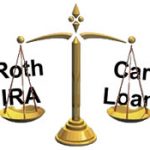
Commodities are an asset class that some investors include in their portfolio for diversification purposes. Depending on the specific index, you might track the futures market for aluminum, coffee, copper, corn, cotton, crude oil, gold, diesel, lean hogs, live cattle, natural gas, nickel, silver, soybean meal, soybean oil, soybeans, sugar, unleaded gas, wheat, and zinc (image source).
In my experience, when commodities prices have been hot, you see them in a lot of portfolios. When commodities prices have been cold (as they have been recently), you don’t read about them as much. Via ETF.com, there are now a new wave of commodity ETFs that hope to gather assets as the next up-cycle begins.
Here are some of the reasons why people didn’t like commodity ETFs in the past (besides the volatility and poor past performance):
- Higher costs. Expense ratios for most commodity ETFs were above 0.50% annually, with many closer to 1%
- Late K-1 tax forms. Most commodities ETFs issued Schedule K-1 forms at tax time, which not only were an extra form to file but they also tended to come very late in the year. You might have all your 1099s by the end of January, but your K-1 might not trickle in until March or even April.
- Some were actually exchange-traded notes (ETNs), which carried credit risk as they were technically unsecured debt obligations of the issuer. In contrast, ETFs hold securities separately in trust with a custodian. If an ETF issuer fails, you still own the underlying assets.
Here are two new ETFs that address the issues above with (1) have lower costs and (2) a new structure that doesn’t issue K-1 forms:
- GraniteShares Bloomberg Commodity Broad Strategy No K-1 ETF (COMB) – This ETF is technically actively-managed, but is benchmarked against the Bloomberg Commodity Index (BCOM). It is structured as a 1940 Act funds and thus does not issue K-1s. The expense ratio is 0.25%. Fact sheet.
- GraniteShares S&P GSCI Commodity Broad Strategy No K-1 ETF (COMG) – This ETF is technically actively-managed, but is benchmarked against the S&P GSCI commodity Index. It is structured as a 1940 Act fund and thus does not issue K-1s. The expense ratio is 0.35%. Fact sheet.
The 0.25% expense ratio of COMB makes it the cheapest broad commodity ETF available today. (The ETFS Bloomberg All Commodity Strategy K-1 Free ETF (BCI) has an expense ratio of 0.29%.) Now, the following bit from this ETFTrends article brings up the worry that this “no K-1 structure” might produce tracking error against the index.
In an attempt to help investors avoid K-1s, the ETFs do not invest directly in commodity futures but rather gains exposure to these investments by investing a portion of its assets in the GraniteShares BCOM Cayman Limited, a wholly-owned subsidiary of the Fund organized under the laws of the Cayman Islands. The subsidiary is not an investment company registered under the Investment Company Act of 1940 and has the same investment objective and will follow the same general investment policies and restrictions as the funds.
If you don’t buy the futures directly, what are you buying? Are you saying that you are buying a subsidiary that does buy the futures directly? How does that indirect structure change your investment performance? I don’t know and I don’t plan on buying either ETF, but I thought I’d point it out. ETF.com doesn’t seem to be worried:
Technically, both COMB and COMG are actively managed, but in practice, they are mostly passive funds. The futures portion of the portfolio, up to 25%, is held in a subsidiary based in the Cayman Islands and generally reflects the index, while the collateral is held in a cash portfolio holding fixed-income securities that is managed stateside.
The GraniteShares ETFs above only launched 5/22/17 and the last time I checked ETFdb.com only had about $2.5 million in assets so it is too early to make any judgments. The CEO of GraniteShares is William Rhind, who formerly worked at Blackrock/iShares and as the CEO of the popular SPDR Gold Shares ETF (GLD).
If you like low-cost access to the commodities asset class, this looks to be a positive development. I personally choose not to invest in this asset class as I think the long-term returns will be lower than that of equities. (Lower costs should improve the return outlook, however.) Commodities funds may offer the draw of being a diversification “hedge”, but I don’t want to pay the price of lower returns, high volatility, and higher complexity. There are many smart minds that disagree, so do your own research as well.
New Low-Cost Broad Commodity ETFs from GraniteShares from My Money Blog.
© MyMoneyBlog.com, 2017.
Read More: New Low-Cost Broad Commodity ETFs from GraniteShares







